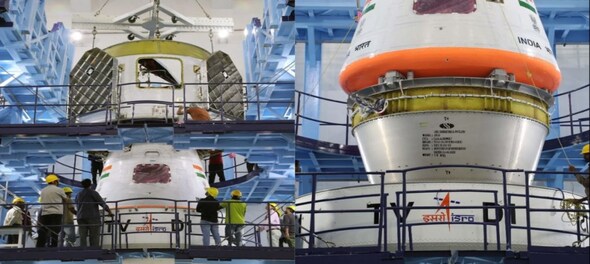
The Indian Space Research Organisation (ISRO) is gearing up for a major milestone in its ambitious Mission Gaganyaan, as it recently revealed details about the TV-D1 test flight scheduled for Saturday, October 21, 2023. This mission marks a critical step in India's mission to demonstrate human spaceflight capabilities.
The countdown begins
ISRO made the eagerly awaited announcement on Monday (October 16), confirming that the TV-D1 test flight is set to take place on the morning of October 21, 2023, between 7-9 am. The launch is scheduled to occur from the Satish Dhawan Space Centre (SDSC-SHAR) in Sriharikota, Andhra Pradesh.
Mission Gaganyaan:The TV-D1 test flight is scheduled for🗓️October 21, 2023🕛between 7 am and 9 am🚩from SDSC-SHAR, Sriharikota #Gaganyaan pic.twitter.com/7NbMC4YdYD
— ISRO (@isro) October 16, 2023
Mission Gaganyaan overview
The Gaganyaan project is a monumental endeavour, aiming to showcase India's ability to launch a human crew into an orbit of 400 km and safely return them to Earth, making a historic splashdown in the Bay of Bengal.
The TV-D1 test flight primarily focuses on the evaluation of the crew module (CM), designed to accommodate Indian astronauts during the human spaceflight mission set for the following year. This specific test involves launching the CM into space, bringing it back to Earth, and recovering it after landing in the Bay of Bengal.
For the TV-D1 mission, ISRO will employ an unpressurised CM, which has successfully completed its integration and testing. Despite being unpressurised, this crew module closely mirrors the size and mass of the actual Gaganyaan CM and houses all the necessary systems for deceleration and recovery, including parachutes, recovery aids, actuation systems, and pyrotechnics.
The avionics systems are configured in a dual-redundant mode for navigation, sequencing, telemetry, instrumentation, and power, ISRO informed.
The CM used in TV-D1 is equipped to capture flight data for evaluating the performance of various systems. After touchdown in the Bay of Bengal, it will be retrieved using a dedicated vessel and a team of divers from the Indian Navy.
ISRO described TV-D1 as a single-stage liquid rocket developed specifically for this abort mission.
"The TV-D1 is in the final stages of preparation. The vehicle is a single-stage liquid rocket developed for this abort mission. The payloads are the CM and the crew escape systems (CES) with their fast-acting solid motors, along with CM fairing (CMF) and interface adapters," ISRO said.
The mission aims to simulate an abort condition during the ascent trajectory corresponding to a Mach number of 1.2, approximately 1,482 km per hour, expected during the Gaganyaan mission. The CES, along with the CM, will separate from the test vehicle at an altitude of about 17 km.
"Subsequently, the abort sequence will be executed autonomously commencing with the separation of CES and deployment of the series of parachutes, finally culminating in the safe touchdown of CM in the sea, about 10 km from the coast of Sriharikota," ISRO added.
Milestone in the making
The crew module, after integration and various electrical tests in Bengaluru, including an acoustic test, was dispatched to the Sriharikota spaceport on August 13. At the spaceport, it will undergo vibration tests and pre-integration with the CES before its final integration onto the test vehicle at the launch pad.
ISRO underscored the significance of this test vehicle mission, saying it is a pivotal milestone for the Gaganyaan programme as a near-complete system is integrated for a flight test.
"The success of this test flight will set the stage for the remaining qualification tests and unmanned missions, leading to the first Gaganyaan mission with Indian astronauts," ISRO added.
(Edited by : Shoma Bhattacharjee)
Check out our in-depth Market Coverage, Business News & get real-time Stock Market Updates on CNBC-TV18. Also, Watch our channels CNBC-TV18, CNBC Awaaz and CNBC Bajar Live on-the-go!


Supreme Court says it may consider interim bail for Arvind Kejriwal due to ongoing Lok Sabha polls
May 3, 2024 4:57 PM
10% discount on fare on Mumbai Metro lines 2 and 7A on May 20
May 3, 2024 2:40 PM

